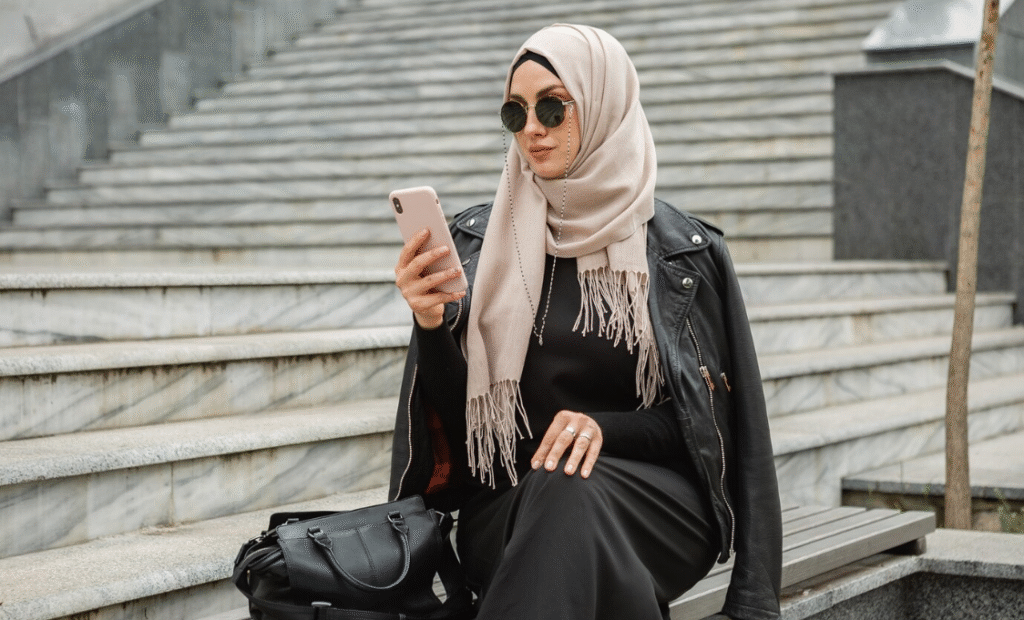The abaya is more than just a garment—it’s a cultural icon, a fashion statement, and a symbol of modesty for millions of women worldwide. Whether worn for religious reasons, cultural identity, or personal style, the abaya has evolved over centuries while maintaining its elegance and significance.
The abaya is not merely a garment—it is a profound statement of grace, identity, and empowerment. Woven with centuries of tradition yet boldly embracing modern innovation, this iconic piece transcends borders, cultures, and fashion eras. From the sun-baked dunes of Arabia to the glittering runways of Paris, the abaya commands respect, blending modesty with undeniable elegance. It is a canvas of self-expression, where intricate embroidery whispers heritage, flowing silhouettes celebrate freedom, and contemporary cuts defy convention. For the woman who wears it, the abaya is more than fabric; it is armor, artistry, and an unshakable declaration of who she is—unapologetically refined, fiercely confident, and eternally timeless.
In this comprehensive guide, we’ll explore:
✔ The history and origins of the abaya
✔ Different styles, fabrics, and designs
✔ How the abaya has become a global fashion trend
✔ Styling tips for modern women
✔ FAQs about the abaya

By the end of this post, you’ll have a deep appreciation for this beautiful garment and perhaps even inspiration to add one to your wardrobe!
1. The History and Origins of the Abaya
Ancient Beginnings
The abaya traces its roots to ancient Mesopotamia and the Arabian Peninsula, where loose, flowing garments were worn for protection against the harsh desert climate. Over time, it became closely associated with Islamic culture, symbolizing modesty as prescribed in the Quran.
Cultural Significance
In countries like Saudi Arabia, UAE, Qatar, and Kuwait, the abaya is a traditional dress code, often worn over other clothing. While black was the most common color (for its simplicity and elegance), modern abayas now come in various colors, patterns, and embellishments.
Evolution in Fashion
From a simple cloak to a high-fashion statement, designers like Dolce & Gabbana, Chanel, and local Middle Eastern brands have redefined the abaya, blending tradition with contemporary trends.
2. Types of Abayas: Styles, Fabrics, and Designs
Traditional vs. Modern Abayas
| Traditional Abaya | Modern Abaya |
|---|---|
| Plain black, loose-fitting | Colorful, fitted, embroidered |
| Minimal embellishments | Sequins, lace, beadwork |
| Long sleeves, floor-length | Open-front, kimono-style, cape designs |
Popular Fabrics
- Crepe – Lightweight and flowy
- Chiffon – Delicate and elegant
- Jersey – Stretchy and comfortable
- Silk/Satin – Luxurious and formal
Trending Abaya Styles in 2024
- Open-Front Abayas – Perfect for layering
- Embroidered Abayas – Intricate designs for special occasions
- Sporty Abayas – For active women who want modesty without sacrificing comfort
- Digital Print Abayas – Bold patterns and floral motifs
3. The Abaya in Global Fashion
Celebrities and Influencers Wearing Abayas
International stars like Huda Kattan, Halima Aden, and Bella Hadid have embraced the abaya, showcasing its versatility in fashion. Luxury brands now feature abayas in their collections, proving that modesty and style go hand in hand.
How to Style an Abaya for Different Occasions
- Casual Look: Pair with sneakers and a crossbody bag
- Office Wear: Add a belt for structure and wear with heels
- Evening Glam: Choose a sequined or lace abaya with statement jewelry
4. Common Misconceptions About the Abaya
❌ Myth: Abayas are only for Muslim women.
✅ Fact: Women of all backgrounds wear abayas for fashion and comfort.
❌ Myth: Abayas are oppressive.
✅ Fact: Many women choose to wear abayas as an expression of faith, culture, or personal style.
5. FAQs About the Abaya
Q1: What is the difference between an abaya and a hijab?
- Abaya: A full-length outer garment.
- Hijab: A headscarf that covers the hair.
Q2: Can non-Muslim women wear an abaya?
Absolutely! The abaya is a fashion piece embraced by women worldwide.
Q3: How do I choose the right abaya for my body type?
- Petite: Opt for fitted styles to avoid looking overwhelmed.
- Curvy: Flowy fabrics like chiffon provide a flattering drape.
- Tall: Long, structured abayas enhance elegance.
Q4: Where can I buy high-quality abayas online?
Popular brands include:
✔ Modanisa
✔ SHEIN Modest
✔ East Essence
Q5: How do I care for my abaya?
- Hand wash delicate fabrics like chiffon.
- Store on padded hangers to maintain shape.
Conclusion: The Abaya as a Fashion Staple
The abaya is a timeless, versatile, and culturally rich garment that continues to evolve. Whether you wear it for faith, fashion, or comfort, there’s an abaya style for every woman.
Will you be adding an abaya to your wardrobe? Let us know in the comments!

